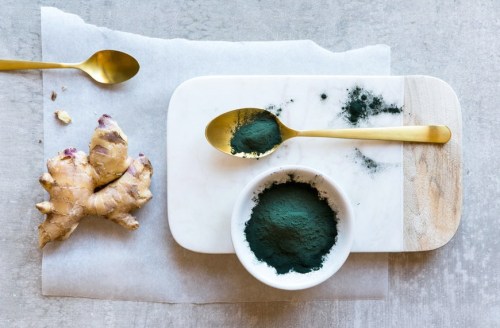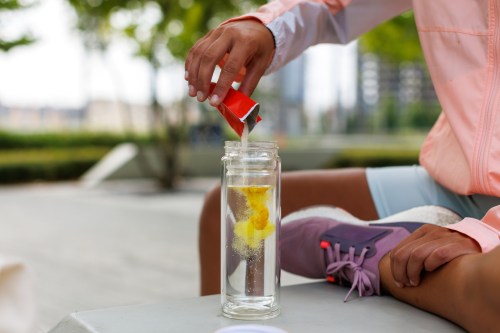Our editors independently select these products. Making a purchase through our links may earn Well+Good a commission
Algae face-off! The difference between chlorella and spirulina, explained
A nutritionist breaks down the health benefits of algae superfoods chlorella and spirulina—and shares how to safely add them to your diet.

From mermaid toast to blue lattes and pretty much any healthy unicorn food, edible algae have unexpectedly seeped into our daily diets—and our social feeds. The two varieties most commonly found in healthy Instagrammers’ pantries are chlorella and spirulina, both of which are often touted for their detox properties. (And their dreamy green-and-blue hues, of course.) But what’s the actual point of difference between these two pond-sourced superfoods?
In truth, says Bonnie Taub-Dix, RDN, they’re actually pretty comparable. I know, very anticlimactic. “Both algae have very similar properties, benefits, and nutrients,” explains Taub-Dix, creator of BetterThanDieting.com and author of Read it Before You Eat It: Taking You from Label to Table. “I would say the biggest difference between the two is their color.” Chlorella’s a truer green, while spirulina has more of a blue-ish cast.
Taub-Dix explains that both chlorella and spirulina are believed to calm inflammation, protect cells, and provide nutrients like iron, magnesium, and potassium. And vegans rejoice: Taub-Dix says algae have high amounts of omega-3s, as well. “If you don’t eat fish, these will be a great source of omega-3 fatty acids for you,” she says.
Another one of the many benefits of spirulina and chlorella is that both algaes have the ability to increase the body’s white blood cell count. Chlorella and spirulina have each been found to help fight off infection and aid in eliminating heavy metals and toxins from the body. (Don’t stop drinking water, though—that’s still the best way to detox daily.)
Chlorella and spirulina have each been found to help fight off infection and aid in eliminating heavy metals and toxins from the body.
You might be tempted to combine both in your kitchen creations—double the benefits, right?—but Taub-Dix warns against that, at least at first. “With any supplement, it’s best to ease into it slowly,” she says. Of course, you want to get a good picture of your Smurf-y looking smoothie, but you also don’t want to end up with stomach cramps, bloating, or an allergic reaction. “Start with a small amount of one in a smoothie, so you can regulate how much you’re putting in, and see how your body takes it.” She also recommends avoiding high-dose spirulina or chlorella capsules until your digestive system gets used to the substances.
You should also double-check with your doctor before taking either algae if you’re on medication. “People don’t always think of drug interactions when they take natural supplements, but it should be a concern,” Taub-Dix warns. “Both of these algae have a high concentration of vitamin K, which is great, but not if you’re taking blood thinners because the two don’t react well together. Chlorella, specifically, also has a high concentration of iodine, which some people may have issues with.”
Overall, the nutritionist says, it’s important to remember that both chlorella and spirulina are meant to supplement an already healthy diet. “These algae will definitely help boost vitamin and nutrient intake, but they shouldn’t replace actual food,” she says. So don’t skimp on the leafy greens in your blue smoothie bowl, okay?
These 3 recipes use spirulina in ways you’ve never thought of—and you definitely don’t want to miss out on making matcha spirulina donuts.
Sign Up for Our Daily Newsletter
Get all the latest in wellness, trends, food, fitness, beauty, and more delivered right to your inbox.
Got it, you've been added to our email list.










